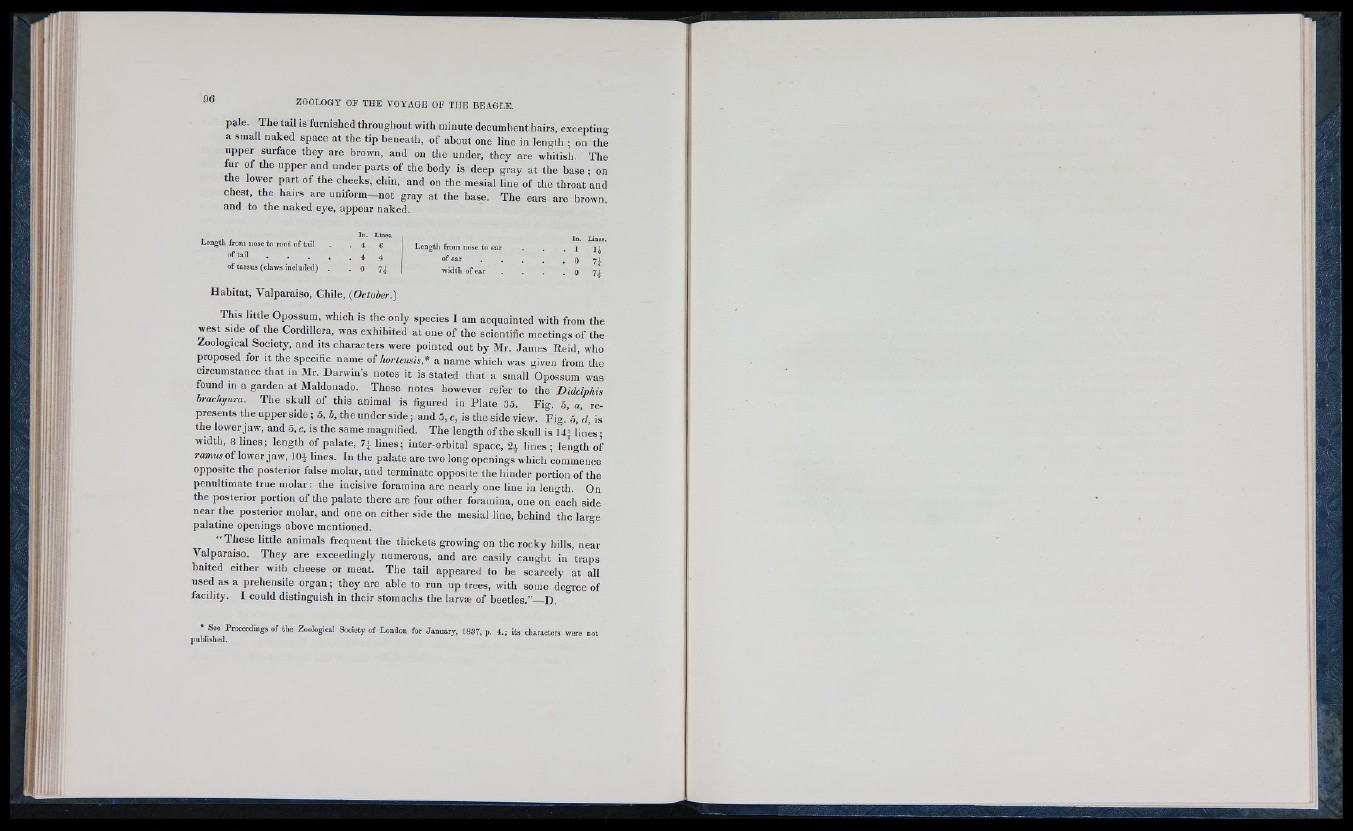
pale. The tail is furnished throughout with minute decumbent hairs, excepting
a small naked space at the tip beneath, of about one line in length ; on the
upper surface they are brown, and on the under, they are whitish. The
fur of the upper and under parts of the body is deep gray at the base ; on
the lower part of the cheeks, chin, and on the mesial line of the throat and
chest, the hairs are nniform-not gray at the base. The ears are brown,
and to the naked eye, appear naked.
Length from nose to root of tail
of tail . . . .
of tarsus (claws included) .
In. Lines. i 6 Length from nose to ear
of ear
width of ear
In. Lines. 1 H
0 7i
0 7 i
Habitat, Valparaiso, Chile, (October.)
This httle Opossum, which is the only species I am acquainted with from the
west side of the Cordillera, was exhibited at one of the scientific meetings of the
Zoological Society, and its characters were pointed out by Mr. James Reid, who
proposed for it the specific name of hortensis,* a name which was given from the
circumstance that in Mr. Darwin’s notes it is stated that a small Opossum was
found in a garden at Maldonado. These notes however refer to the Didelphis
brachyura. The skull of this animal is figured in Plate 35. Fig. 5, a, represents
the upper side; 6, b, the under side; and 6, c, is the side view. Fig.’s ,’d, is
the lower jaw, and 5, e, is the same magnified. The length of the skull is 14i l’inés;
width, 8 lines; length of palate, 71- lines; inter-orbital space, 2x lines; length of
ramus oi lower jaw, 104 lines. In the palate are two long openings which commence
opposite the posterior false molar, and terminate opposite the hinder portion of the
penultimate true molar: the incisive foramina are nearly one line in length. On
the posterior portion of the palate there are four other foramina, one on each side
near ffie posterior molar, and one on either side the mesial line, behind the large
palatine openings above mentioned.
“ These little animals frequent the tliickets growing on the rocky hills, near
■Valparaiso. They are exceedingly numerous, and are easily caught in traps
baited either with cheese or meat. The tail appeared to be scarcely at all
used as a prehensile organ; they are able to run up trees, with some degree of
facility. I could distinguish in their stomachs the larva: of beetles.” D.
published.
of the Zoological Society of London for January, 1837, p. 4.; its characters •